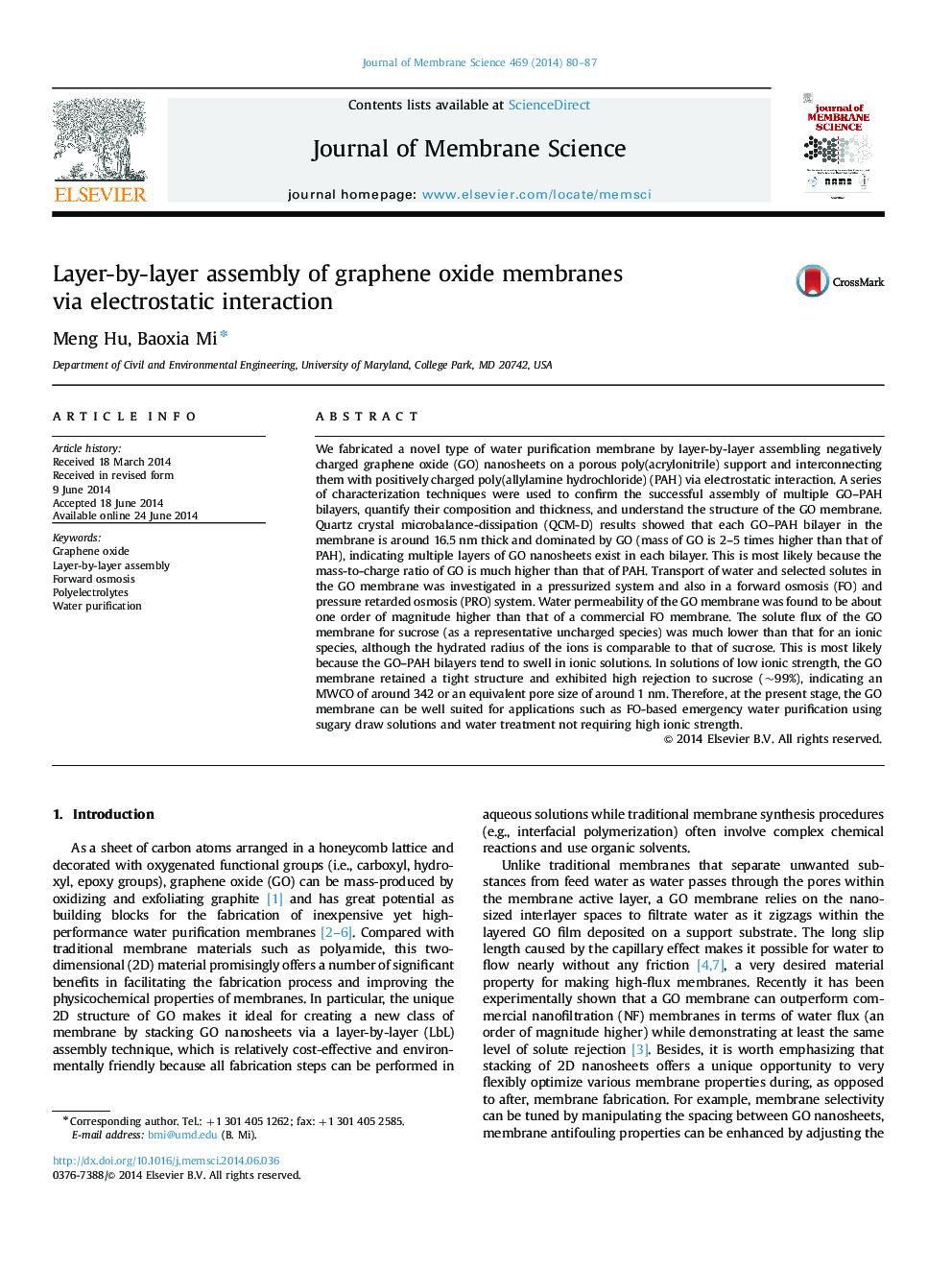| کد مقاله | کد نشریه | سال انتشار | مقاله انگلیسی | نسخه تمام متن |
|---|---|---|---|---|
| 633485 | 1456030 | 2014 | 8 صفحه PDF | دانلود رایگان |
• A novel graphene oxide (GO) membrane was fabricated by layer-by-layer assembly.
• GO nanosheets were successfully interconnected by a cationic polyelectrolyte.
• The GO membrane exhibited high water flux in forward osmosis membrane process.
• The flux of sucrose was lower than that of ionic species with similar hydrated radii.
We fabricated a novel type of water purification membrane by layer-by-layer assembling negatively charged graphene oxide (GO) nanosheets on a porous poly(acrylonitrile) support and interconnecting them with positively charged poly(allylamine hydrochloride) (PAH) via electrostatic interaction. A series of characterization techniques were used to confirm the successful assembly of multiple GO–PAH bilayers, quantify their composition and thickness, and understand the structure of the GO membrane. Quartz crystal microbalance-dissipation (QCM-D) results showed that each GO–PAH bilayer in the membrane is around 16.5 nm thick and dominated by GO (mass of GO is 2–5 times higher than that of PAH), indicating multiple layers of GO nanosheets exist in each bilayer. This is most likely because the mass-to-charge ratio of GO is much higher than that of PAH. Transport of water and selected solutes in the GO membrane was investigated in a pressurized system and also in a forward osmosis (FO) and pressure retarded osmosis (PRO) system. Water permeability of the GO membrane was found to be about one order of magnitude higher than that of a commercial FO membrane. The solute flux of the GO membrane for sucrose (as a representative uncharged species) was much lower than that for an ionic species, although the hydrated radius of the ions is comparable to that of sucrose. This is most likely because the GO–PAH bilayers tend to swell in ionic solutions. In solutions of low ionic strength, the GO membrane retained a tight structure and exhibited high rejection to sucrose (~99%), indicating an MWCO of around 342 or an equivalent pore size of around 1 nm. Therefore, at the present stage, the GO membrane can be well suited for applications such as FO-based emergency water purification using sugary draw solutions and water treatment not requiring high ionic strength.
Figure optionsDownload high-quality image (283 K)Download as PowerPoint slide
Journal: Journal of Membrane Science - Volume 469, 1 November 2014, Pages 80–87
